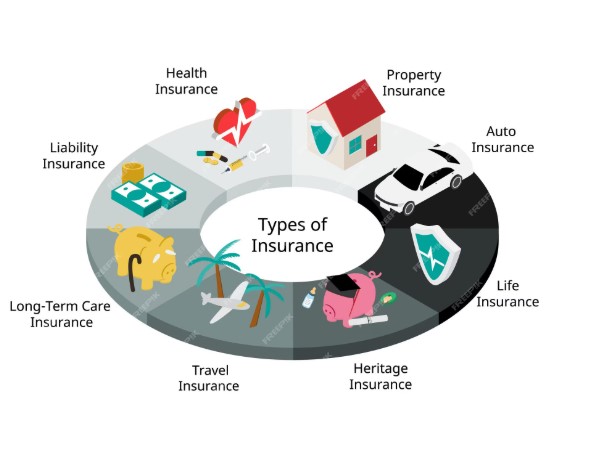Insurance Plans You Need in 2025-freegame24.xyz
Overview of Insurance Plans
As we approach 2025, understanding the variety of insurance plans available is more important than ever. Insurance is a critical component of financial planning, offering protection and peace of mind against life’s uncertainties. The primary categories of insurance you should consider include health, home, auto, and disability insurance. Each type serves a unique purpose and offers different forms of coverage to address specific needs.

Health insurance is essential for covering medical expenses and ensuring you have access to necessary healthcare services. With the ongoing evolution in healthcare, it’s important to stay updated on new plans and revisions that may better suit your needs. Home insurance, whether for homeowners or renters, protects your living space and personal belongings from potential risks like fire, theft, or natural disasters. Auto insurance provides coverage for your vehicle and helps manage the financial impact of accidents, theft, or other damages.
Disability insurance is another crucial plan to consider. It safeguards your income if you’re unable to work due to a medical condition, ensuring you can maintain your financial stability during challenging times. Besides these essential categories, there are other specialized insurance plans worth exploring, such as life insurance, which offers financial support to your beneficiaries in the event of your passing, and travel insurance, which covers unexpected incidents while you’re away from home.
Selecting the right insurance plans requires careful consideration of your unique circumstances, such as your health status, living situation, and financial goals. It’s beneficial to consult with insurance professionals who can provide personalized recommendations based on your individual needs. Comparing different policies and understanding the terms and conditions will help you make informed choices.
Insurance is not a one-size-fits-all solution, so it’s vital to evaluate your requirements and choose plans that offer the most comprehensive coverage. Regularly reviewing and updating your insurance portfolio ensures that you remain adequately protected as your life evolves. Staying informed and proactive in your approach to insurance will help you navigate the complexities of the insurance landscape and secure the protection you need for the future.
Health Insurance Revisions
Health insurance is undergoing significant updates as we head into 2025. One notable change is the expanded availability of telehealth services, enabling more people to receive medical consultations and care from home. This shift not only makes healthcare more convenient but also expands access to medical services, particularly for those living in remote or underserved areas.
Mental health coverage is another area seeing improvements. Insurers are increasingly offering comprehensive plans that include therapy, counseling sessions, and other mental health services. This change reflects a growing recognition of the importance of mental well-being alongside physical health.
Another development is the emphasis on preventive care. More health insurance plans are covering preventive services such as annual check-ups, screenings, and vaccinations without additional out-of-pocket costs. This focus on prevention aims to catch potential health issues early, improving overall health outcomes and reducing long-term medical expenses.
Customized health plans are also becoming more prevalent. Insurers are utilizing data analytics to offer more personalized coverage options tailored to individual health profiles and needs. This can include specialized plans for chronic conditions, maternity care, or fitness and wellness programs.
Additionally, there is an ongoing effort to simplify the process of selecting and managing health insurance. Many insurers are enhancing their digital platforms, offering user-friendly interfaces for policy management, claims submission, and access to health resources. These tools are designed to make it easier for policyholders to navigate their insurance plans and make informed healthcare decisions.
Prescription drug coverage is also seeing reforms. Insurers are negotiating better prices with pharmaceutical companies and including more generic and biosimilar options in their formularies. This approach aims to make medications more affordable and accessible to policyholders.
Finally, health savings accounts (HSAs) are being integrated with more insurance plans, allowing individuals to save pre-tax dollars for medical expenses. This financial tool provides a way to manage healthcare costs more effectively, especially for those with high-deductible health plans.
As these revisions take effect, staying informed about your options and understanding the specific benefits and limitations of your health insurance plan will be crucial in ensuring you receive the best possible care.
Home Insurance for Owners and Renters
When considering home insurance, it’s essential to understand the distinct needs of homeowners and renters. For homeowners, a comprehensive policy should encompass coverage for the dwelling, personal property, liability, and additional living expenses if you’re displaced due to a covered event. Dwelling coverage protects the physical structure of your home from risks such as fire, storms, and vandalism. Personal property coverage ensures that your belongings, like furniture, electronics, and clothing, are protected against theft or damage.
Liability coverage is a crucial component of homeowners insurance, safeguarding you against legal and medical expenses if someone is injured on your property. Additionally, if your home becomes uninhabitable due to a covered loss, your policy should cover the costs of temporary housing and related expenses, helping you maintain your standard of living while repairs are underway.
Renters insurance, on the other hand, focuses on protecting the personal belongings of tenants and providing liability coverage. While the landlord’s insurance typically covers the building itself, renters insurance ensures that your possessions are safeguarded against incidents like theft, fire, or water damage. Liability coverage within renters insurance also protects you if you’re held responsible for injuries to others or damage to their property.
Both homeowners and renters should consider additional endorsements or riders to customize their policies based on unique needs. For instance, if you own high-value items such as jewelry, artwork, or collectibles, you might need extra coverage to fully protect these possessions. Flood and earthquake insurance are also important considerations, as standard policies typically do not cover these events.
Understanding the specific terms, conditions, and exclusions of your policy is vital. Carefully review what is and isn’t covered, and consider the deductibles and coverage limits. Evaluating the risks specific to your location, such as natural disasters or crime rates, can help you determine the appropriate level of coverage.
Working with an insurance professional can provide valuable insights and recommendations tailored to your situation. They can help you navigate the different options and ensure you have adequate protection for your home or rented space. By thoroughly assessing your needs and comparing policies, you can secure the most suitable home insurance coverage.
Changes in Auto Insurance
The auto insurance landscape in 2025 is undergoing significant changes, largely driven by technological advancements. One of the most notable trends is the rise of usage-based insurance, which tailors premiums based on individual driving behavior. By utilizing telematics devices or smartphone apps, insurers can monitor metrics such as speed, braking patterns, and overall driving habits. This data-driven approach rewards safe drivers with lower premiums and encourages better driving practices.
Another key development is the integration of advanced driver-assistance systems (ADAS) in modern vehicles. Features like lane-keeping assist, adaptive cruise control, and automatic emergency braking not only enhance safety but also influence insurance premiums. Vehicles equipped with these technologies are less likely to be involved in accidents, leading to potential discounts on insurance rates. As ADAS becomes more widespread, it’s essential for drivers to understand how these features impact their insurance costs.
Digital platforms are also revolutionizing how policyholders interact with their auto insurance. Many insurers are enhancing their online portals and mobile apps, offering user-friendly interfaces for managing policies, submitting claims, and accessing customer support. This shift towards digitalization simplifies the process of customizing coverage, making payments, and tracking claims, providing a more seamless experience for policyholders.
Electric vehicles (EVs) are becoming increasingly popular, and this trend is reflected in auto insurance policies as well. Insurers are developing specialized plans for EVs, taking into account factors such as battery replacement costs and unique repair needs. As more drivers make the switch to electric cars, understanding the specific insurance requirements for these vehicles is crucial.
Furthermore, the rise of ride-sharing and car-sharing services is influencing auto insurance options. Insurers are offering tailored policies for drivers who participate in these services, providing coverage that accounts for the unique risks associated with ride-sharing and car-sharing activities. This includes hybrid policies that combine personal and commercial coverage, ensuring drivers are adequately protected while using their vehicles for multiple purposes.
Lastly, the ongoing development of autonomous vehicles is set to transform the auto insurance industry. While fully self-driving cars are not yet mainstream, the gradual adoption of autonomous features is prompting insurers to re-evaluate traditional risk models. As this technology evolves, it will be important to stay informed about how autonomous vehicles affect insurance policies and premiums.
Essential Disability Insurance
Disability insurance plays a crucial role in maintaining financial stability if you’re unable to work due to illness or injury. In 2025, it’s important to understand the different options available, namely short-term and long-term disability insurance. Short-term disability insurance provides coverage for a limited period, typically ranging from a few weeks to several months, and is designed to replace a portion of your income during your recovery period. Long-term disability insurance, on the other hand, offers extended coverage that can last for several years or even until retirement, depending on the policy terms.
When evaluating disability insurance, consider factors such as the coverage period, the waiting period before benefits begin, and the percentage of income that the policy will replace. The waiting period, also known as the elimination period, is the time you must wait after becoming disabled before receiving benefits. This period can vary from a few days to several months, and choosing a shorter waiting period usually results in higher premiums.
The percentage of income covered by disability insurance is another critical aspect. Most policies cover between 50% to 70% of your pre-disability income. Assess your financial needs and obligations to determine the appropriate coverage level. Some employers offer group disability insurance as part of their benefits package, but it may be wise to supplement this with an individual policy to ensure adequate coverage.
Your occupation, income level, and current health status are important considerations when selecting a disability insurance policy. Some policies offer occupation-specific coverage, which means you’ll receive benefits if you can’t perform the duties of your specific job, even if you’re able to work in another capacity. This type of coverage can be particularly valuable for professionals in specialized fields.
Additionally, consider any policy riders or add-ons that may enhance your coverage. For example, a cost-of-living adjustment (COLA) rider ensures that your benefits keep pace with inflation, while a future purchase option (FPO) rider allows you to increase your coverage as your income grows, without needing to undergo additional medical underwriting.
Consulting with an insurance professional can provide personalized advice and help you navigate the complexities of disability insurance, ensuring you select a plan that best meets your needs.
Wrap-Up and Concluding Insights
Evaluating insurance plans is a crucial aspect of financial planning, especially as we look ahead to 2025. Each type of insurance—health, home, auto, and disability—serves distinct purposes and offers specific protections that are essential for safeguarding your well-being and assets. With continuous advancements and changes in the insurance industry, staying informed and proactive is key to maintaining adequate coverage.
The variety in insurance options means there’s no universal solution, making it important to assess your unique needs and circumstances. Consulting with insurance professionals can provide tailored advice, ensuring you choose the most suitable plans. Regularly reviewing your insurance portfolio is also vital, as it allows you to adapt to any changes in your lifestyle or financial situation.

Digital tools and platforms are increasingly simplifying the process of managing insurance policies. From digital claims submissions to user-friendly interfaces, these advancements make it easier to understand your coverage and make informed decisions. The rise of personalized and data-driven plans further enhances the ability to match insurance options to individual needs.
Moreover, keeping an eye on the latest developments, such as the integration of advanced technologies in auto insurance and the expansion of telehealth services in health insurance, will enable you to benefit from new features and potential cost savings. Specialized plans for electric vehicles, telematics-based auto policies, and comprehensive mental health coverage are just a few examples of how insurance is evolving to meet modern demands.
Ultimately, having the right insurance coverage offers more than just financial protection—it provides peace of mind, allowing you to focus on your personal and professional life with confidence. By thoroughly assessing your needs and staying updated on industry trends, you can secure the most effective insurance solutions for your future.
